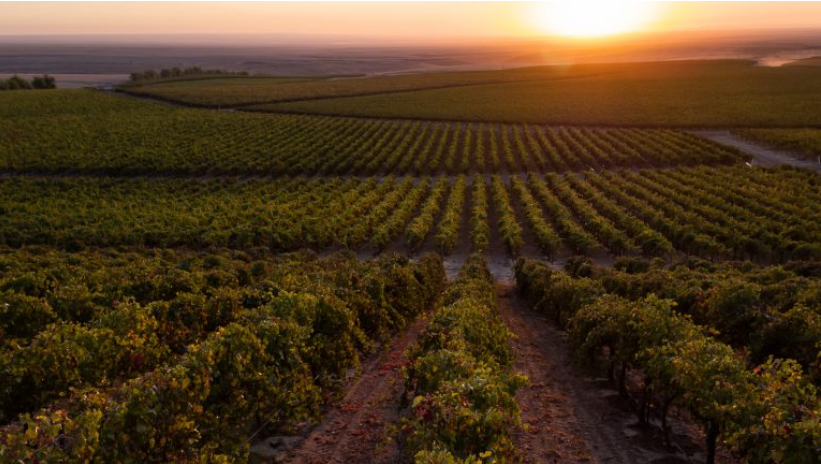

A year after Ste. Michelle Wine Estates (SMWE) declared its intention to cut back on fruit purchases by 40 percent, the Washington wine industry is reflecting on the significant shifts that have transpired. This announcement, made last July, was a wake-up call for an industry deeply rooted in long-standing relationships between growers and producers. As the state’s second-largest wine-producing entity, SMWE’s decision prompted a reassessment among Washington’s wine community, with some viewing it as an opportunity for innovation and improved quality, while others are concerned about the repercussions, including oversupply and financial strain.
Ste. Michelle, which began as Ste. Michelle Vintners in 1967 and later became known as Chateau Ste. Michelle, has been a cornerstone of the Washington wine scene. For decades, it played a central role, working with vineyards across Washington, Oregon, and California. Prior to the announcement, SMWE managed vineyards totaling 30,000 acres, with 27,000 of those in Washington alone. However, SMWE’s own estate vineyards accounted for only a small fraction of this: 2,400 acres in Washington and 190 acres in Oregon. Considering that Washington has a total of 61,200 planted acres, this meant that over a third of the state’s vineyards were tied to SMWE’s operations.
Ste. Michelle’s influence extended beyond mere production. “They used to be a benevolent big brother,” recalls Andrew Latta, who served as a winemaker at Charles Smith before establishing his own ventures, Latta Wines and Kind Stranger. He notes how SMWE had previously helped smaller wineries during tough times, such as a freeze event in 2004 when they provided crucial grape supplies to struggling winemakers.
The shift to reduce fruit purchases stemmed from various factors, including an oversupply of grapes and a change in ownership. SMWE stated that the reduction was necessary to better balance grape supply with market demand and to ensure long-term sustainability for both their business and the broader Washington wine industry. Despite requests for further comment, the company has not provided additional details.
Kristina Kelley, executive director of the Washington State Wine Commission, acknowledges that the wine landscape is evolving, with Washington experiencing consolidation, market pressures, and shifts in consumer behavior. She sees these changes as both challenges and opportunities, emphasizing the need for the industry to collaborate and make informed decisions to secure a healthy future for Washington wine.
For Washington grape growers, the reduction in contracted acreage has been a significant challenge. Ray McKee, formerly the head red winemaker at Ste. Michelle and now working with Trothe and Sagebreaker at Andrews Family Vineyards, notes that the abrupt drop in contracts led to difficulties in finding new clients for their grapes. Despite these challenges, Andrews Family Vineyards managed to place much of their fruit, thanks in part to the strong reputation of their Trothe label. McKee also points out that the reduction allowed them to expedite their plans for improving the quality of their vineyards by removing less desirable grape varieties.
The impact of SMWE’s reduced fruit purchases has led some growers to view the situation as an opportunity to improve their vineyards. Tom Merkle, a second-generation grape grower, reflects on how the cancellation of contracts has prompted him to remove diseased vines and replant with higher-quality varieties. Merkle and his peers are also experimenting with new grape varieties, such as Saperavi and Chenin Blanc, to align with emerging trends and consumer preferences.
For new winemakers, the shift has opened doors that were previously closed. Tirriddis, a young winery focused on sparkling wines and founded by Andrew Gerow, Gabriel Crowell, and Matthew Doutney, has found opportunities in the changing landscape. They benefit from the ability to work with growers to plant varieties that match their needs and optimize farming practices. Additionally, the availability of older vines, which are often associated with more complex fruit, presents a valuable opportunity for new winemakers seeking high-quality ingredients.
However, there are concerns that the reduction in SMWE’s business could make it harder for new brands to establish themselves. Latta points out that SMWE’s operations not only involved purchasing fruit but also included large-scale production facilities that provided a route for new labels to enter the market. With SMWE’s reduced footprint and the decreasing value of bulk wine, these facilities may face financial difficulties, potentially limiting options for emerging winemakers.
On a positive note, SMWE’s decision may indirectly benefit other regions. In early 2024, severe frosts devastated the wine industry in British Columbia, Canada. In response, the Washington Winegrowers Association (WWA) is working on a plan to provide grapes to the affected region. Although specifics about the program are not available, the WWA is preparing guidelines for shipping grapes across borders to support the recovery of British Columbia’s wine industry.
Despite the upheaval, there is a general sense of optimism about the future. Latta remains hopeful that the realignment in the industry will lead to improved quality and innovation in Washington wines. As the state navigates these changes, the collaborative efforts of growers, producers, and industry stakeholders will play a crucial role in shaping the future of Washington’s wine sector.

Leave a Reply